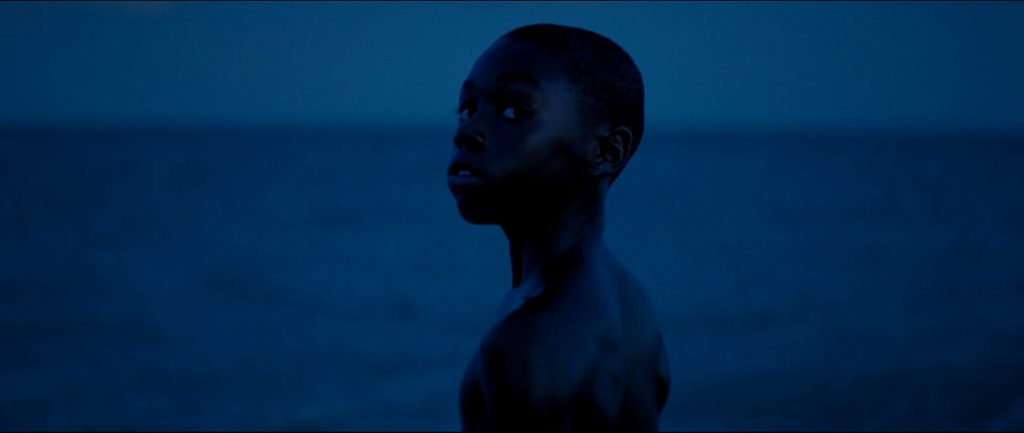“Queer Times in Moonlight“
2022 SCMS Queer & Trans Caucus Chris Holmlund Graduate Student Writing Prize
By Míša Stekl
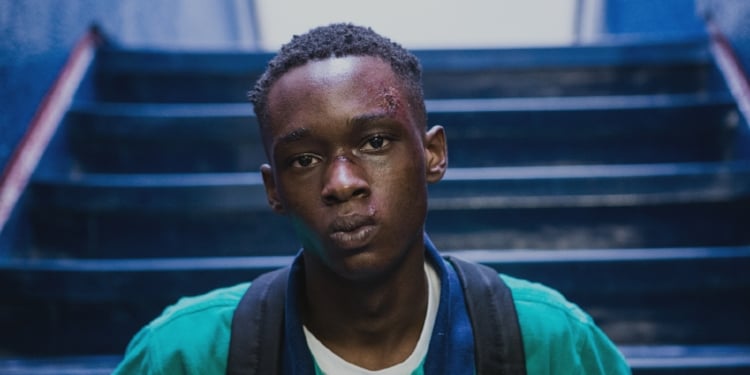
EXCERPT: “Moonlight’s narrative only appears to progress from the challenges that Chiron faced as a child, nicknamed ‘Little’, to his adult reconciliation with his sexual identity and with his estranged lover, Kevin. If we look more closely, differential repetitions disturb the linearity of this coming-of-age plot: adult Chiron’s dreams reiterate Little’s childhood traumas; adult Chiron’s identity as ‘Black’ (his chosen name) is styled after the aesthetics and drug-dealing career of his childhood mentor, Juan; and even the film’s cinematic cuts tend to confront viewers with a multiplicity of repetitions with a difference, or perhaps repetitions of difference.”
‘Have you got any soul?’: reinterpreting High Fidelity’s relationship to Black cultural production
By Alyxandra Vesey
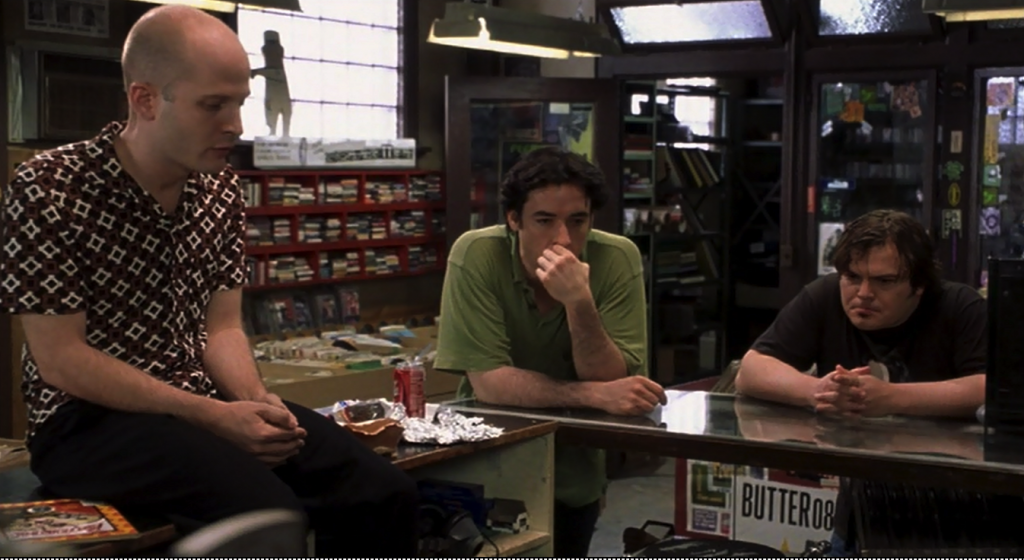
Excerpt: “But in order to fully account for High Fidelity and Cherise’s relationship to Black cultural production, we must finally consider adaptation and representation alongside the practice of covering. The cover song is one of popular music’s richest intertexts. On a formal level, High Fidelity’s soundtrack reuses or reworks many of the same music cues featured in the film while modifying its narrative decisions to foreground and deepen High Fidelity’s intermedial relationship to Black musicianship.”
‘I am (not) Major’: anti-fan memes of Paramount Pictures’ Ghost in the Shell marketing campaign
By James Rendell

Excerpt: “Therefore, while GitS’s trailers attempt, and do adhere to, the franchise’s database paradigm, its political economy and racial hierarchy when read as indicative of Hollywood as an institution are coded as forms of data corruption. For these audiences, the remake really is a shell of the original film.”
“It’s Top Chef, not a personality contest”: grammars of stereotype, neoliberal logics of personhood, and the performance of the racialized self in Top Chef: New York
2022 SCMS Queer & Trans Caucus Chris Holmlund Graduate Student Writing Prize
By Olivia Stowell

Excerpt: “In the context of reality television, cast members must strategically navigate and maintain their self-performance; at the same time, they are subject to the reductions and manipulations inherent to the reality television editing process, which condenses hours of available footage into legible, entertaining narratives. Within Top Chef’s narrative formations, contestants become characters who often (self-consciously or not) embody stereotypical character types.”
‘Use your white voice’: race, sound, and genre in Sorry to Bother You
By Alice Maurice
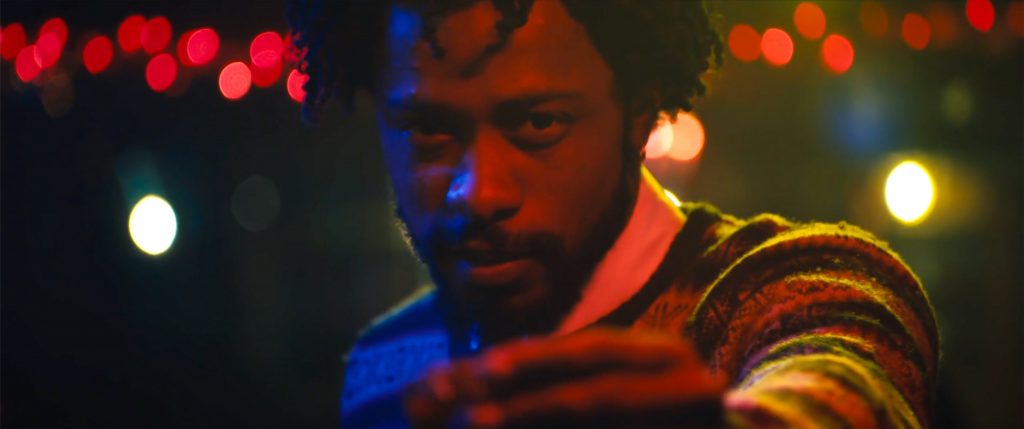
Excerpt: “The music is hypnotic, suggesting Cash’s altered voice is also an ‘altered state’, and it’s also reminiscent of the kind of distorted lullaby you might hear in a horror film. Sound, in film, functions to locate us acoustically within a space; the sound here dislocates Cash from the space of the bar. Sound also orients us within a genre, and here it dislocates us as well. The ‘white voice’ and the musical accompaniment come from ‘another place’, and even the echo effects suggest the altered time and space of this dislocation. Sound, in film, functions to locate us acoustically within a space; the sound here dislocates Cash from the space of the bar. Sound also orients us within a genre, and here it dislocates us as well. The ‘white voice’ and the musical accompaniment come from ‘another place’, and even the echo effects suggest the altered time and space of this dislocation.”
What is not real can be felt into being: affective threat in Jordan Peele’s Get Out
By Emma Train
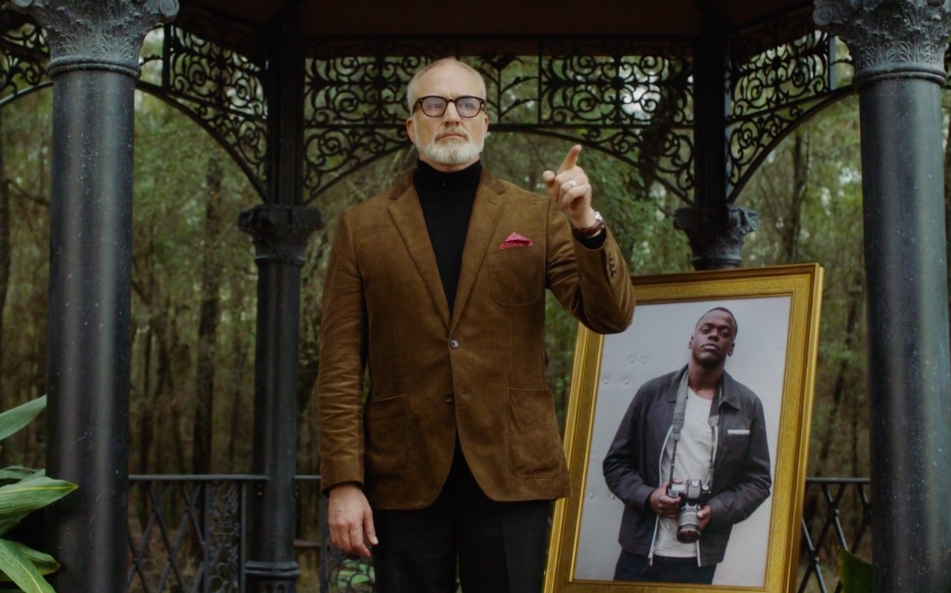
Excerpt: “By analyzing scenes that inaugurate the film’s study of threat, surveillance, and state-mandated control, I argue that Get Out reveals how apparatuses of racial violence intertwine with what Harney and Moten call state-thought. I conclude that Get Out should be read as a commentary on Black cinema and Black aesthetics, particularly how Black aesthetics forms itself against, within, and around neoliberal political discourse.”
‘Flat-Out’ Formalism: Strong Island as Trans-of-Color Critique”
2020 SCMS Queer & Trans Caucus Chris Holmlund Graduate Student Writing Prize
By Tory Jeffay
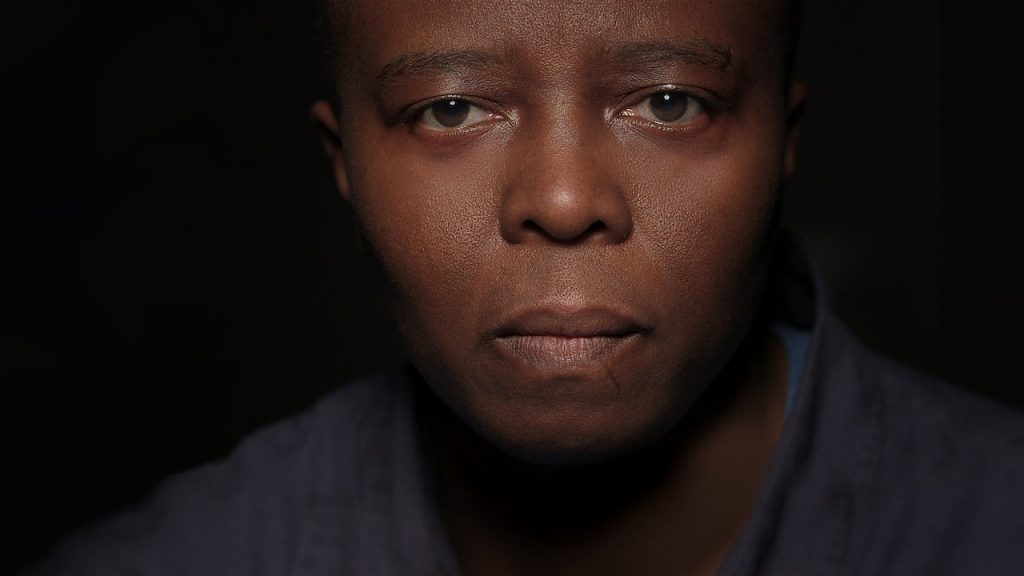
Excerpt: “This article analyzes Strong Island as a film carefully attuned to the grammatical arrangement of its cinematic elements in response to the raced and gendered threats of representation. I describe Strong Island’s visual grammar as an aesthetic of flatness, a term that characterizes the visual treatment of the image, while also encompassing a critique of the logic of the trial system and the ostensible objectivity of the documentary film. Within Ford’s film, visual evidence is presented to the camera’s lens, but, through an aesthetic of flatness, the viewer is denied entry into the diegetic world.”
“Get Out and the Legacy of Sundown Suburbs in Post-Racial America”
By Elizabeth A. Patton

Excerpt: “Get Out interlinks references to old forms of racism with current neoliberal forms. The film depicts palimpsest spaces that contain an aggregation of historical narratives and memories of mental and physical violence experienced by people of color underneath the layer of our contemporary moment of Black Lives Matter. Notably, Rose’s father (Bradley Whitford) is a doctor and her mother (Catherine Keener) is a psychologist, metaphors for the bodily and psychological violence historically committed against people of color. In contrast to the micro-aggressions experienced by Chris that I describe above, Rose’s brother Jeremy (Caleb Landry Jones) openly discusses stereotypes about black bodies, using terminology such as ‘genetic make-up’ and telling Chris that he ‘would be a fucking beast’ if he trained his body. These statements represent racial essentialism and violence, i.e., old forms of racism rooted in colonialism and slavery. Jeremy causes tension at the dinner table as he permits old ideological forms of racism to slip into consciousness alongside neoliberal sensibilities about race. He is your cousin or uncle that voted for Trump that disrupts the neoliberal façade of post-racism.”
“A Cult Film by Proxy: Space Is the Place & the Sun Ra Mythos”
By Jamie Sexton

Excerpt: “Sun Ra’s insistence upon musical creativity as a force of positive transformation is also central to Space is the Place, performing three particular roles. Firstly, the spaceship that Ra and the Arkestra travel through space in is powered by music. Secondly, footage of Ra and the Arkestra performing music is included within the film; diegetically, this is loosely justified by reference to the first point (it demonstrates what makes space travel possible), but seems to be more of an excuse to show performance for its own sake. Thirdly, the futuristic sounds of the Minimoog are incredibly important, non‐diegetic components of the film. As Zuberi explains … In general, these synthesised sounds represented not just space, but also the incomprehension that Sun Ra often generated amongst many American citizens.”
“‘It’s All the Way You Look at It, You Know’: Reading Bill ‘Bojangles’ Robinson’s Film Career”
By Hannah Durkin
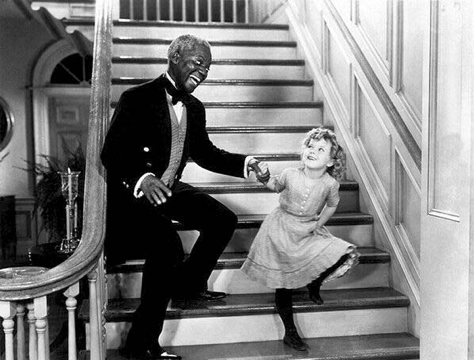
Excerpt: “The humanity of Robinson’s performance is undermined further because, aside from being separated from the plot, he is segregated from the other characters in his only scene in the film. Robinson is positioned as an enslaved man who can only enjoy the pleasure of sitting on an ornamental throne as he stoops to clean it. He is physically distanced from the film’s porcelain-skinned female lead, the title character Dixiana (played by Bebe Daniels), who, despite being the film’s main protagonist, notably never shares a scene with any of the film’s many enslaved men and women. Robinson’s performance therefore adheres strongly to the anti-miscegenation ruling of Hollywood’s censorship body, the Motion Pictures Production Code (Hays Code) – which was introduced just months before the film was released – that inferences of sexual relationships between black and white characters must not be depicted. However, although the scene can be read as spontaneous, reinforcing popular themes of innate African American musicality, it can also be understood as an act of artistic creativity and self-expression, and therefore of jazz improvisation, a key component of tap dance.”
“Water Color: Radical Color Aesthetics in Julie Dash’s Daughters of the Dust”
By Diana Pozo
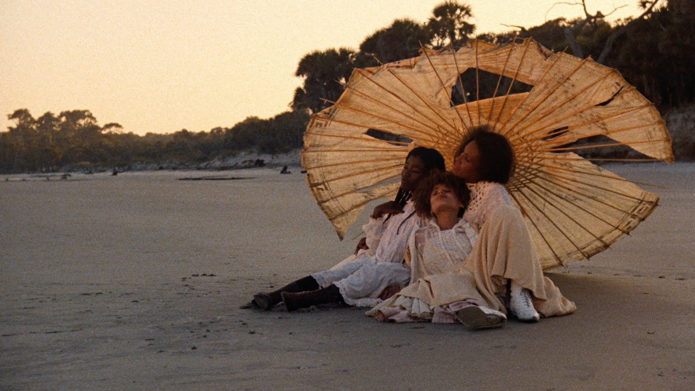
Excerpt: “Daughters of the Dust also tells a historical story entirely in color, avoiding the conventional telling of stories of the past in black and white by showing the sequences depicting the Paezant family’s enslaved ancestors in the most saturated colors of all. While a photographer (Tommy Redmond Hicks) takes posed photographs of the family throughout the film, which will presumably be developed in black and white or sepia tones, the viewer is never shown the black-and-white images resulting from his photography. At the risk of sounding simplistic, Daughters of the Dust is a film stridently in color made by a woman of color about people of color, engaging with all of the ways in which color is racialized and sexed in Western society.”
“This Scholarship Is Important: Experiences in Newspaper Historical Research of African-American Voices on Radio”
By Bala Baptiste

Excerpt: “The earliest record of black person programming in New Orleans dates from 1945, however, this finding might be skewed by the fact that the database newspaper only goes back as far as 1 January 1943 issue. Subsequently, the researcher might discover evidence that a black person was hired or that African-American content was broadcast before 1945. For example, the researcher might see a photograph with a cutline, a short announcement, a display advertisement, or an article that mentions the anniversary of a black program. For those who are pursuing black radio history, be careful about focusing on stereotypical black programs. Make note of them, but be mindful of finding voices of African Americans and not presentations in black face, burlesque, or offensive vaudeville shows. Before the 1960s, white supremacists, segregationists, and/or cultural conservatives produced and disseminated derogatory black-themed programing.”
“Imitation of Life: New Forms of Spectatorship”
By Laura Mulvey
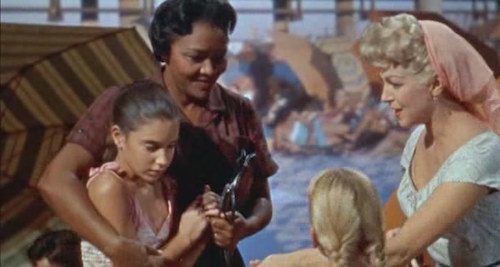
Excerpt: “The fact they can only be seen with difficulty is in itself meaningful: this representation of race is given a formal cinematic figuration, precisely in the fleeting nature of the images. Most obviously: and very likely consciously intended by the director, the visibility/invisibility of the African-American extras relates directly prefigures the film’s themes. Annie’s marginal status within Lora’s household, her daughter Sarah-Jane’s attempts to pass as white; and most particularly, the black to white contrast is overturned in the film’s final scenes of Annie’s funeral, when the streets are filled with black people and her community takes over the social spaces of the city. All the film’s themes, associated with racial marginality and how social visibility is constituted, are prefigured in these opening moments.”
“Romantic Female Friendships as Resistance: Subversive Web Series in the United States and India”
By Molly Bandonis & Namrata Rele Sathe

Excerpt: “Fatimah Asghar and Sam Bailey premiered their series Brown Girls on the streaming platform Open TV in 2017. The show follows Leila (Nabila Hossain) and Patricia (Sonia Denis), who live in Chicago’s Pilsen neighborhood, a space marked both by Mexican-American heritage and its negotiation with white gentrification. Both young women embody ‘Brown Girl’ subject positions; Leila is Pakistani-American and Patricia is Black. Though Brown Girls is often compared to Girls and Broad City, Asghar reports she hasn’t watched these shows because they aren’t marketed to her (Rao 2017). Both Asghar and Bailey credit Issa Rae and her success with HBO show Insecure (2016-) as a much clearer precursor to their series (with similar origins: Rae’s web series The Mis-Adventures of Awkward Black Girl (2011–2013) aired on YouTube). Brown Girls rejects whiteness, characterized by Richard Dyer (2017) as a powerful norm by which all else is measured, through the series’ explicit references to whiteness as not only visible but actively harmful. This commitment to rewriting decades of quietly white female friendship tales also calls out and corrects the postfeminist ignorance of how racial privilege determines political subjectivity.”
BLOG FEATURES
Here Today, Gone Tomorrow: Documentary Distribution After the Streaming Wars
By Nora Stone
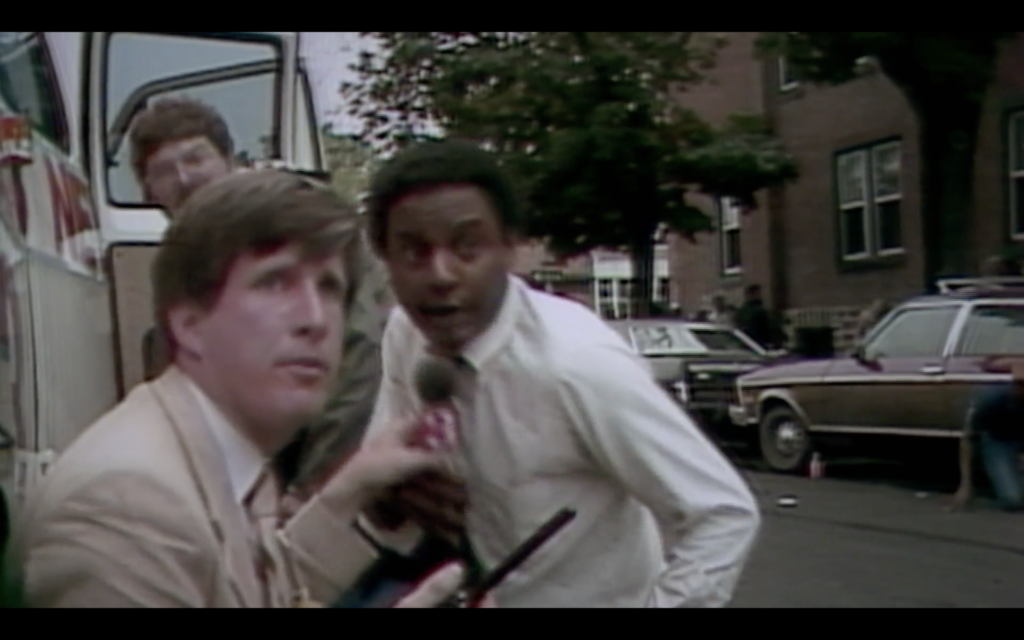
Quare Intimacies: Maria Flood & Victor Evans on ‘Moonlight’
Podcast Discussion
